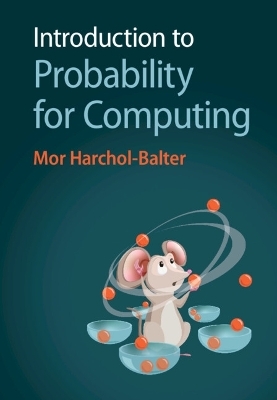
Introduction to Probability for Computing
Cambridge University Press (Verlag)
978-1-009-30907-3 (ISBN)
Learn about probability as it is used in computer science with this rigorous, yet highly accessible, undergraduate textbook. Fundamental probability concepts are explained in depth, prerequisite mathematics is summarized, and a wide range of computer science applications is described. Throughout, the material is presented in a “question and answer” style designed to encourage student engagement and understanding. Replete with almost 400 exercises, real-world computer science examples, and covering a wide range of topics from simulation with computer science workloads, to statistical inference, to randomized algorithms, to Markov models and queues, this interactive text is an invaluable learning tool whether your course covers probability with statistics, with stochastic processes, with randomized algorithms, or with simulation. The teaching package includes solutions, lecture slides, and lecture notes for students.
Mor Harchol-Balter is the Bruce J. Nelson Professor of Computer Science at Carnegie Mellon University. She is a Fellow of both ACM and IEEE. She has received numerous teaching awards, including the Herbert A. Simon Award for teaching excellence at CMU. She is also the author of the popular textbook Performance Analysis and Design of Computer Systems (Cambridge, 2013).
Preface; Part I. Fundamentals and Probability on Events: 1. Before we start ... some mathematical basics; 2. Probability on events; Part II. Discrete Random Variables: 3. Probability and discrete random variables; 4. Expectations; 5. Variance, higher moments, and random sums; 6. z-Transforms; Part III. Continuous Random Variables: 7. Continuous random variables: single distribution; 8. Continuous random variables: joint distributions; 9. Normal distribution; 10. Heavy tails: the distributions of computing; 11. Laplace transforms; Part IV. Computer Systems Modeling and Simulation: 12. The Poisson process; 13. Generating random variables for simulation; 14. Event-driven simulation; Part V. Statistical Inference; 15. Estimators for mean and variance; 16. Classical statistical inference; 17. Bayesian statistical inference; Part VI. Tail Bounds and Applications: 18. Tail bounds; 19. Applications of tail bounds: confidence intervals and balls-and-bins; 20. Hashing algorithms; Part VII. Randomized Algorithms: 21. Las Vegas randomized algorithms; 22. Monte Carlo randomized algorithms; 23. Primality testing; Part VIII. Discrete-time Markov Chains; 24. Discrete-time Markov chains: finite-state; 25. Ergodicity for finite-state discrete-time Markov chains; 26. Discrete-time Markov chains: infinite-state; 27. A little bit of queueing theory; References; Index.
| Erscheinungsdatum | 28.09.2023 |
|---|---|
| Zusatzinfo | Worked examples or Exercises |
| Verlagsort | Cambridge |
| Sprache | englisch |
| Maße | 175 x 250 mm |
| Gewicht | 1230 g |
| Themenwelt | Informatik ► Theorie / Studium ► Algorithmen |
| Mathematik / Informatik ► Mathematik ► Angewandte Mathematik | |
| Mathematik / Informatik ► Mathematik ► Wahrscheinlichkeit / Kombinatorik | |
| ISBN-10 | 1-009-30907-2 / 1009309072 |
| ISBN-13 | 978-1-009-30907-3 / 9781009309073 |
| Zustand | Neuware |
| Haben Sie eine Frage zum Produkt? |
aus dem Bereich


